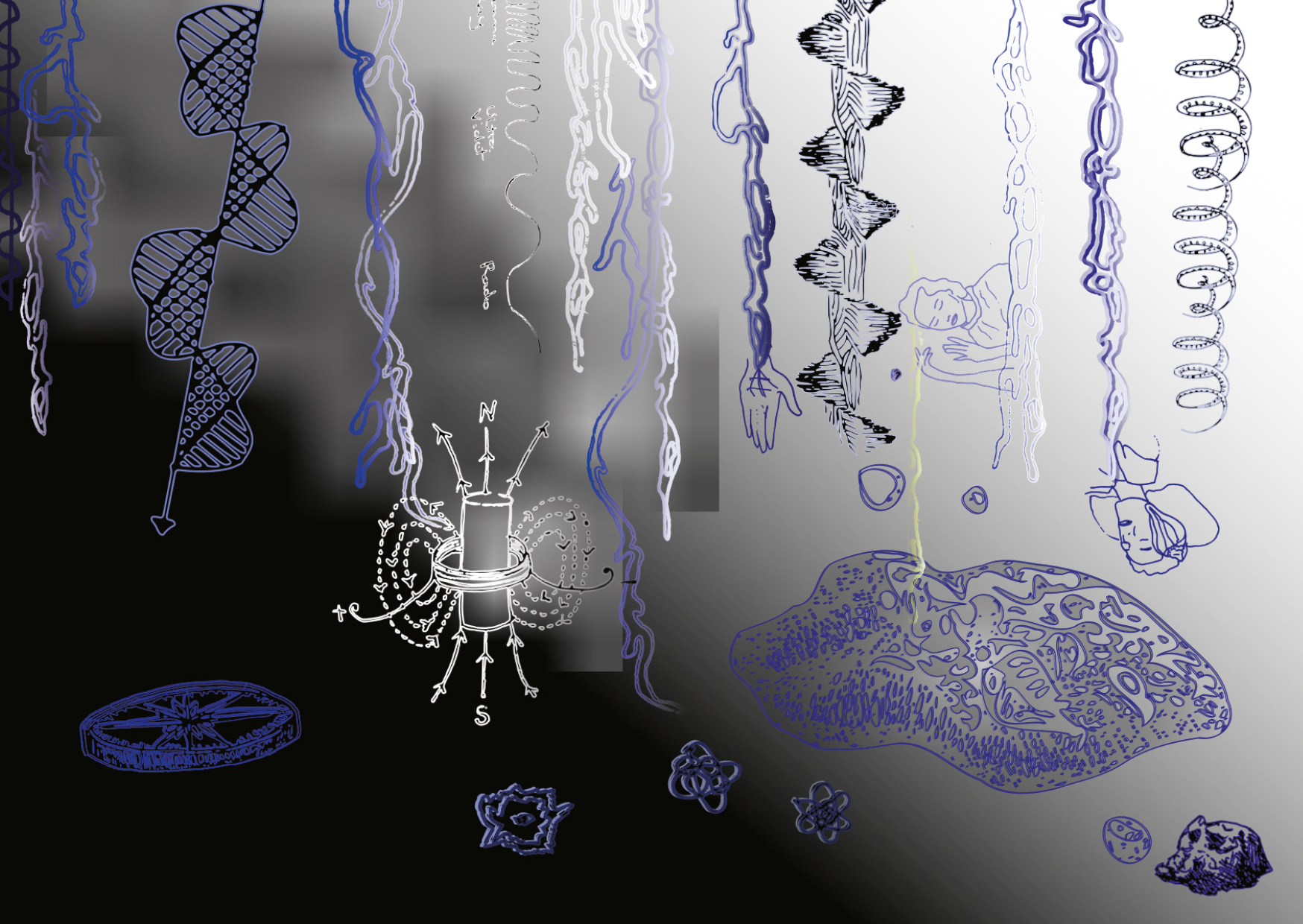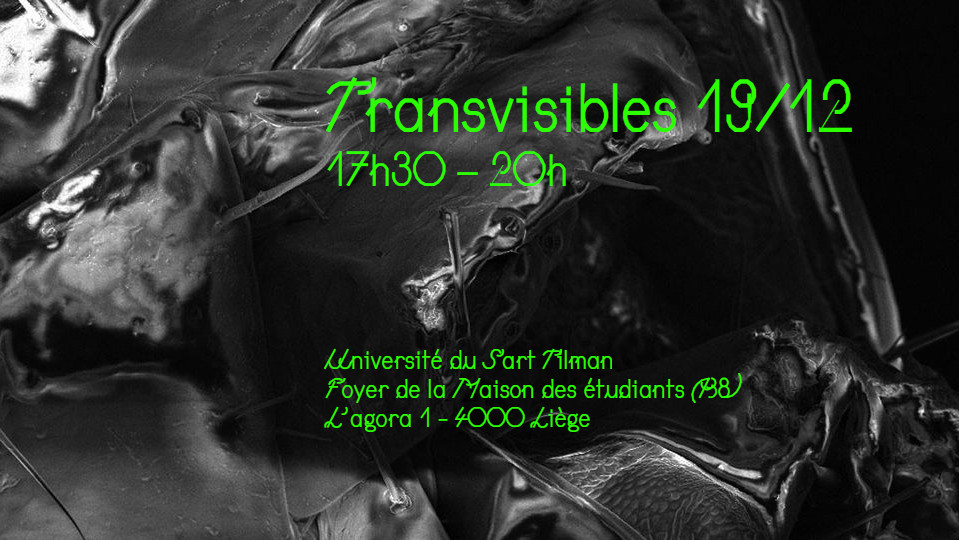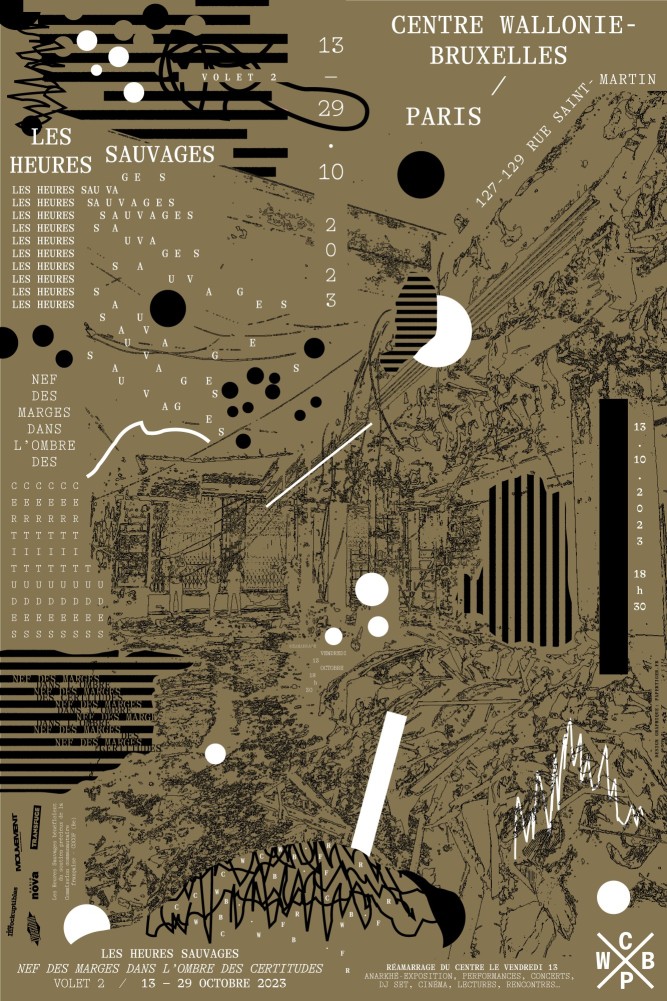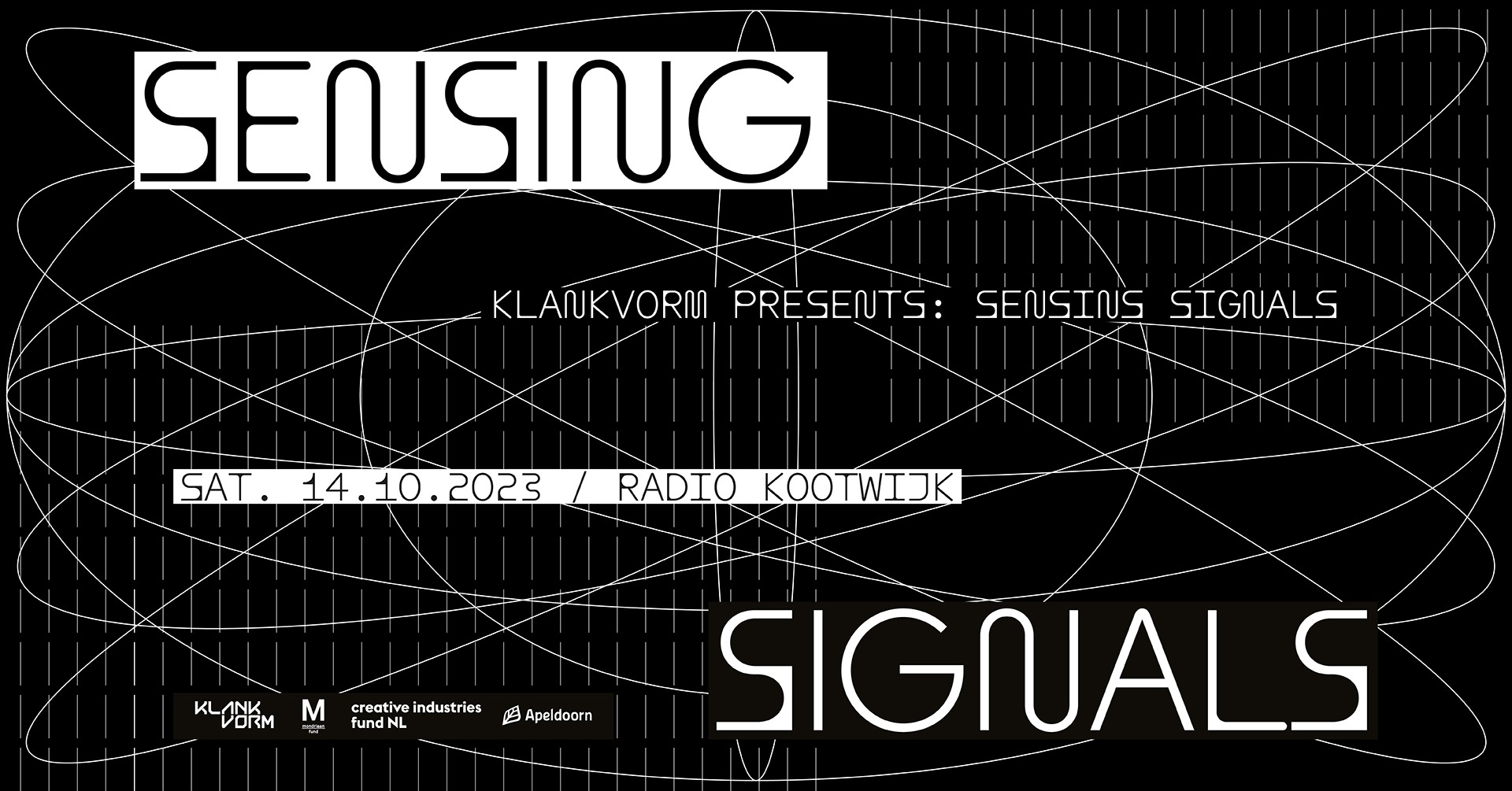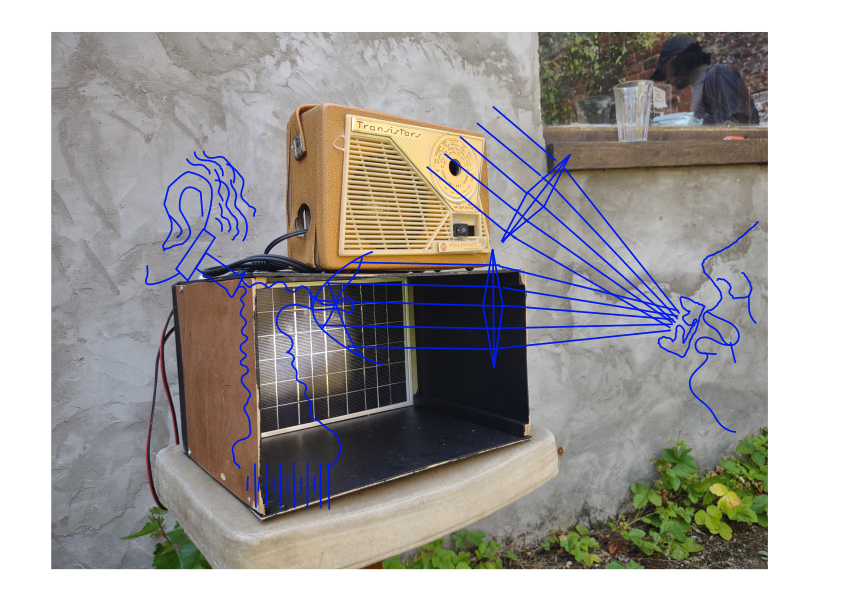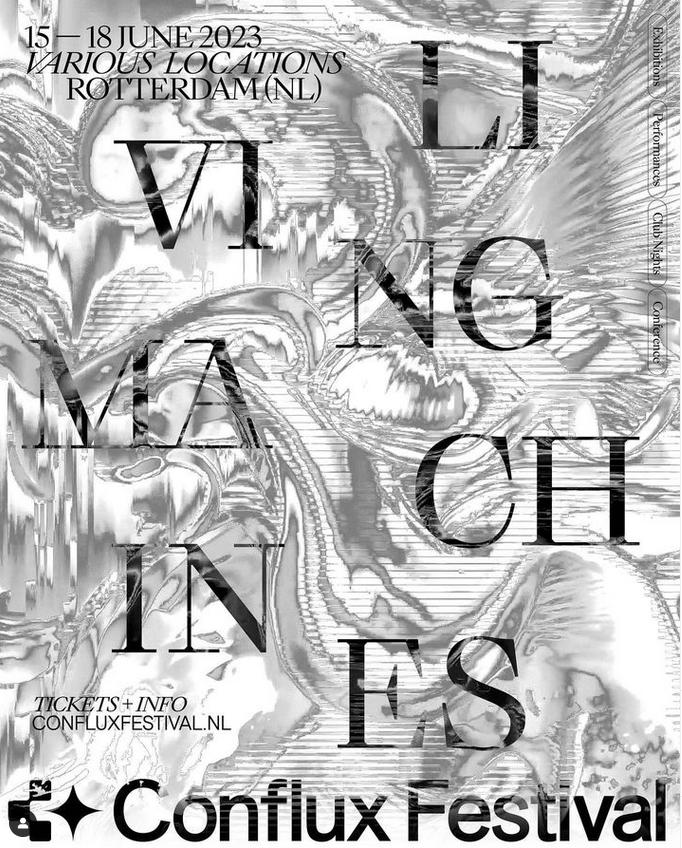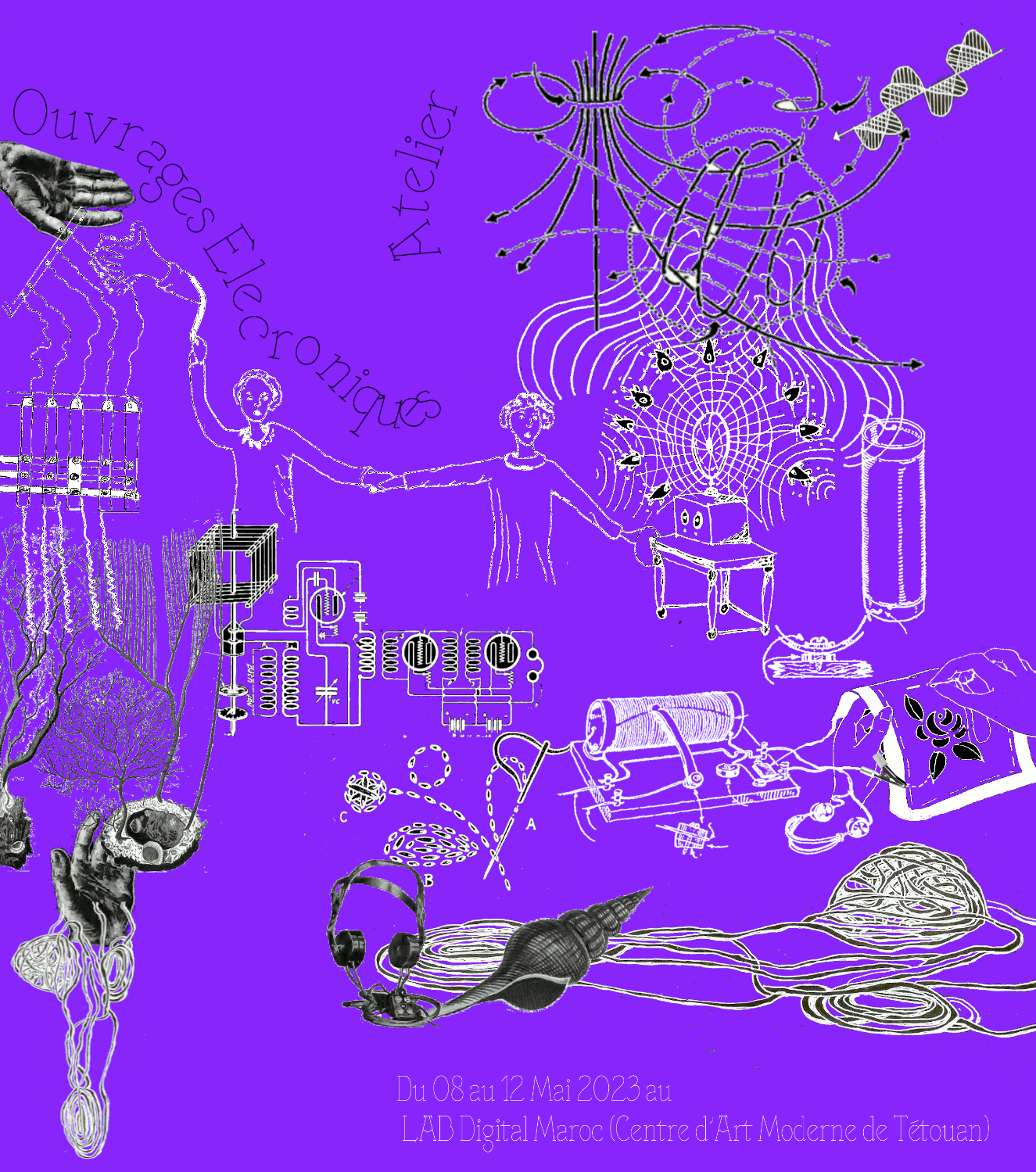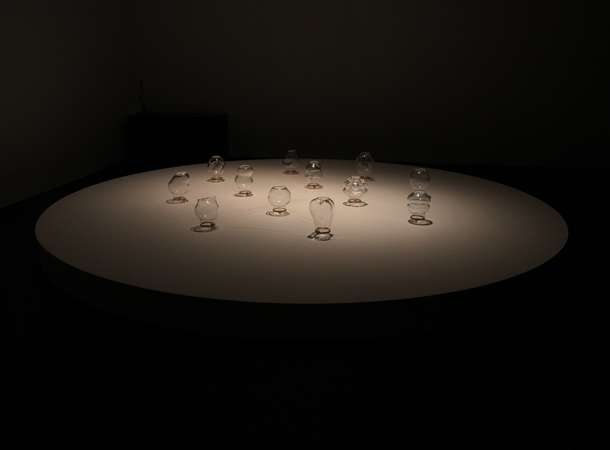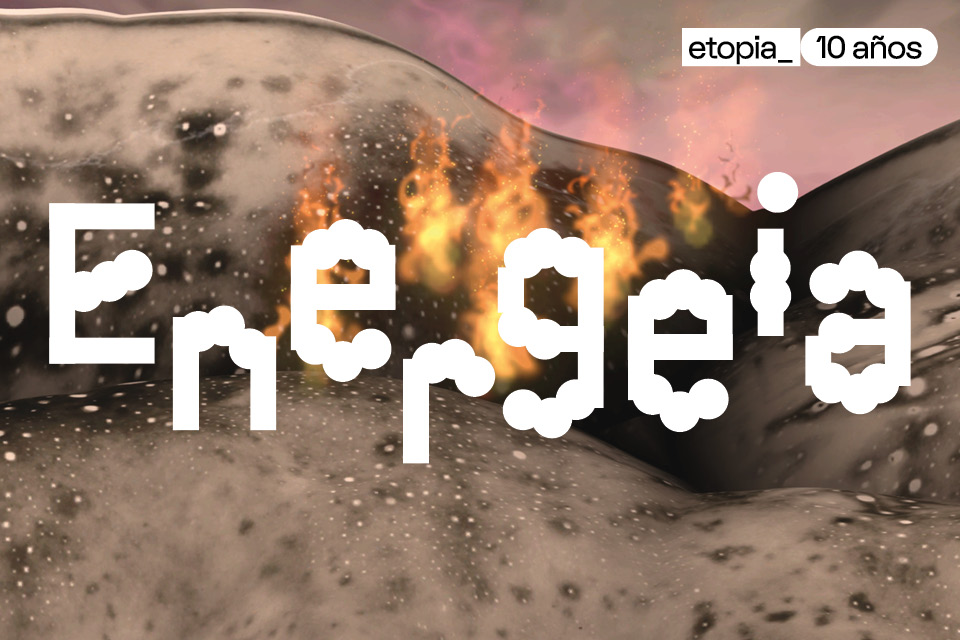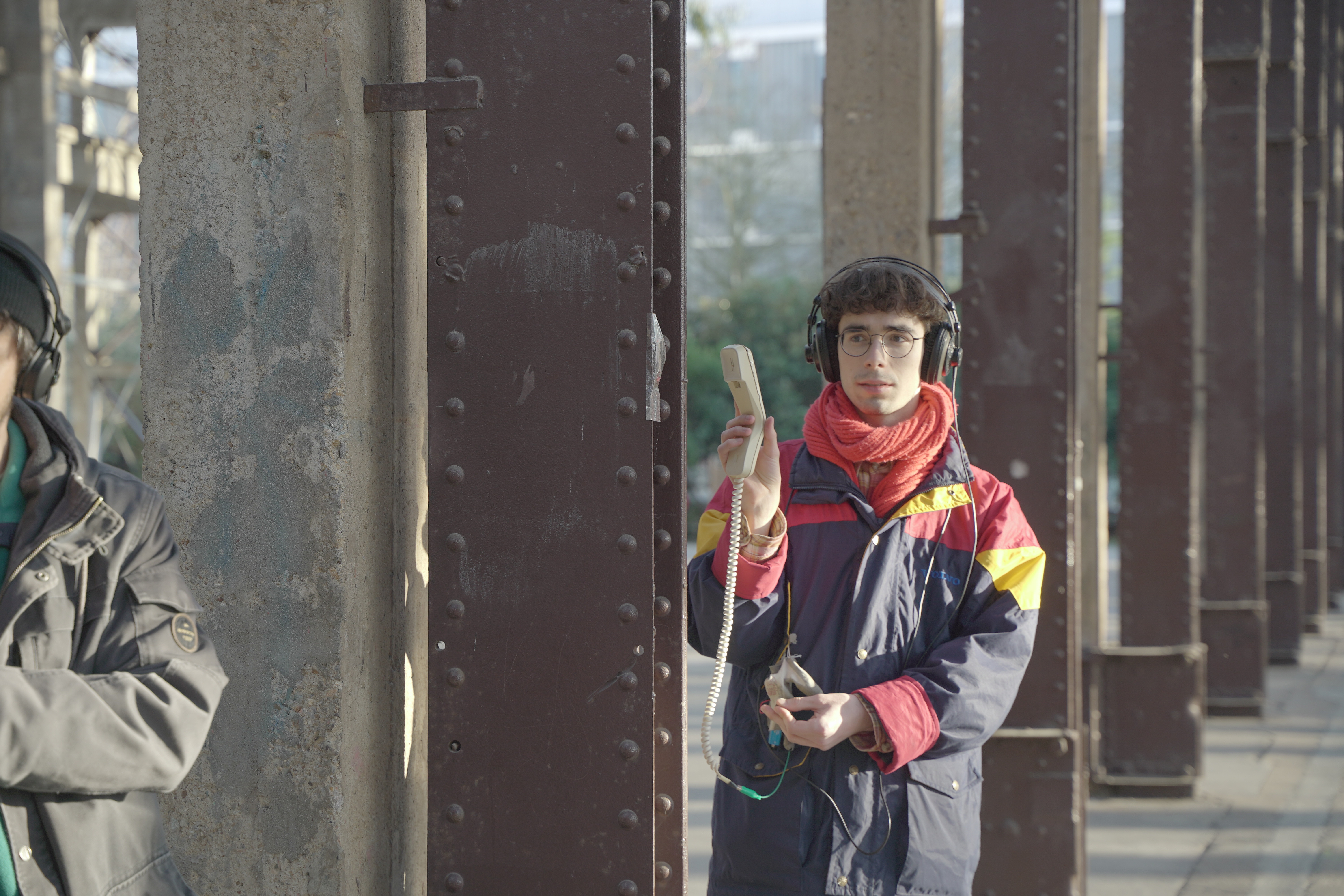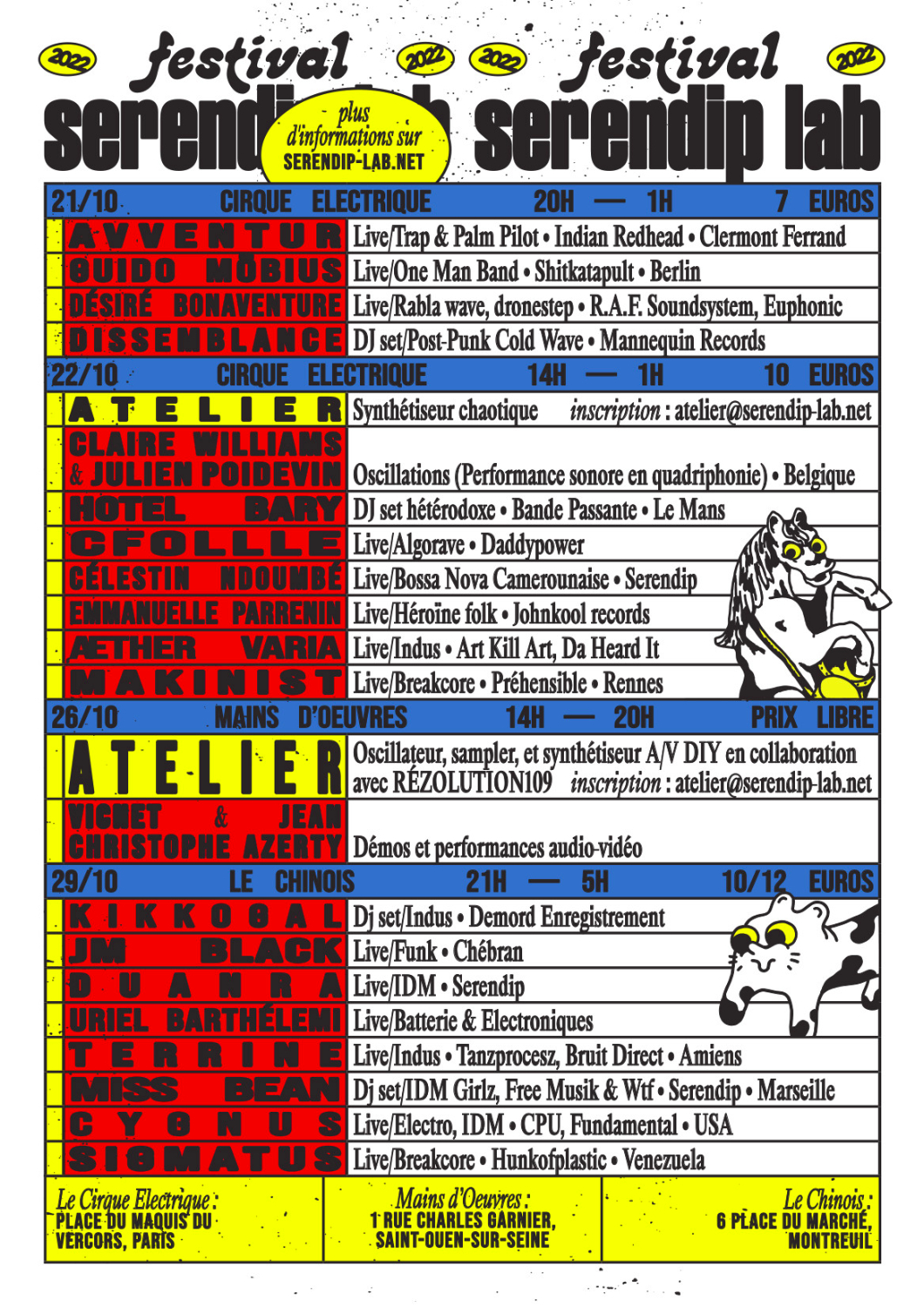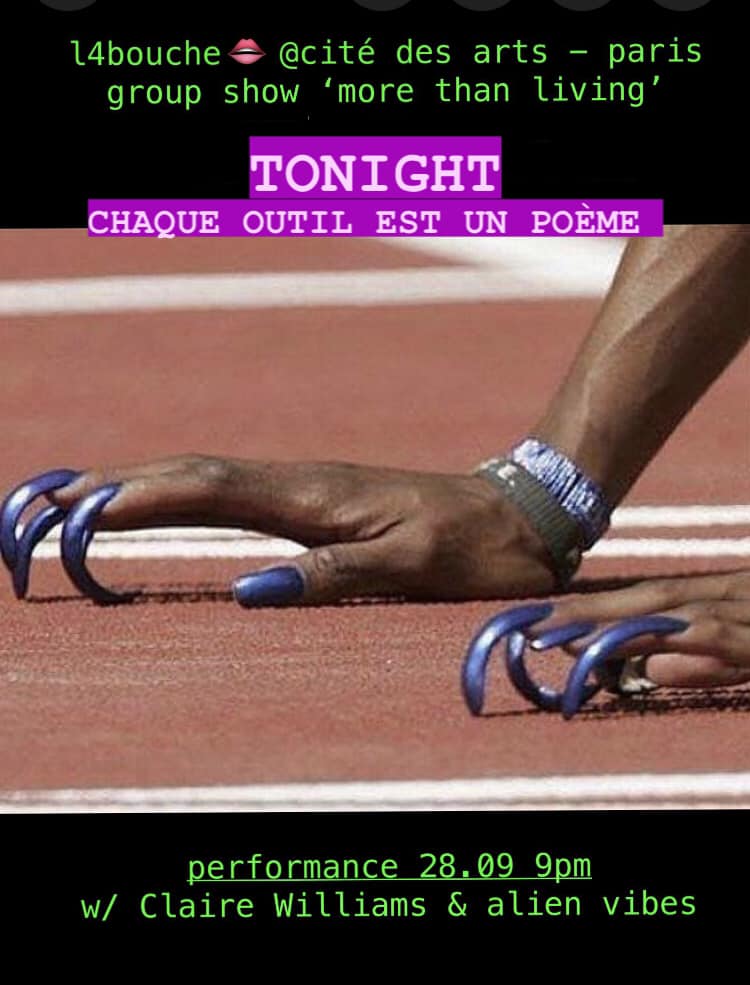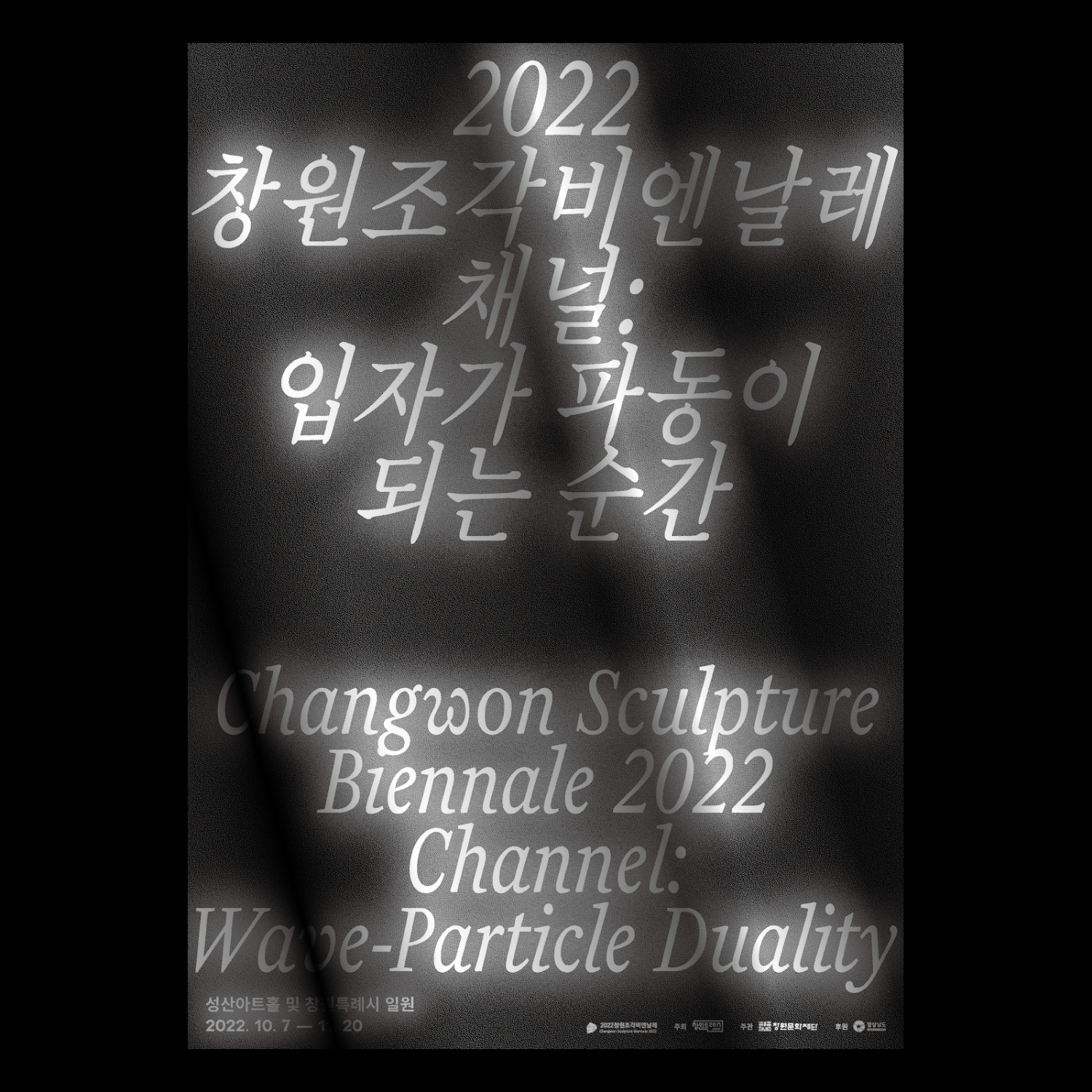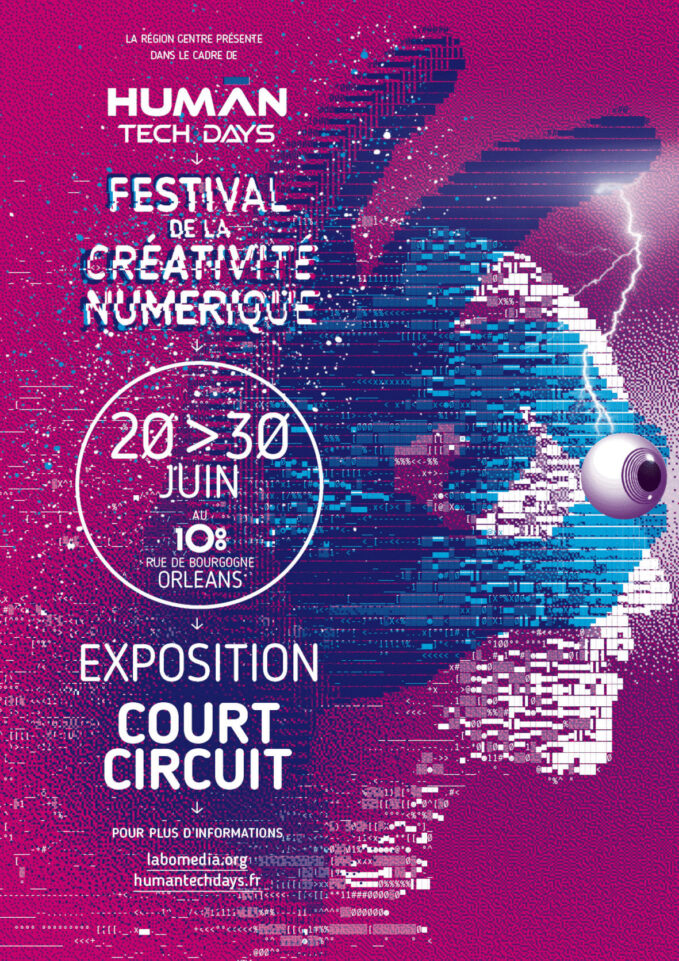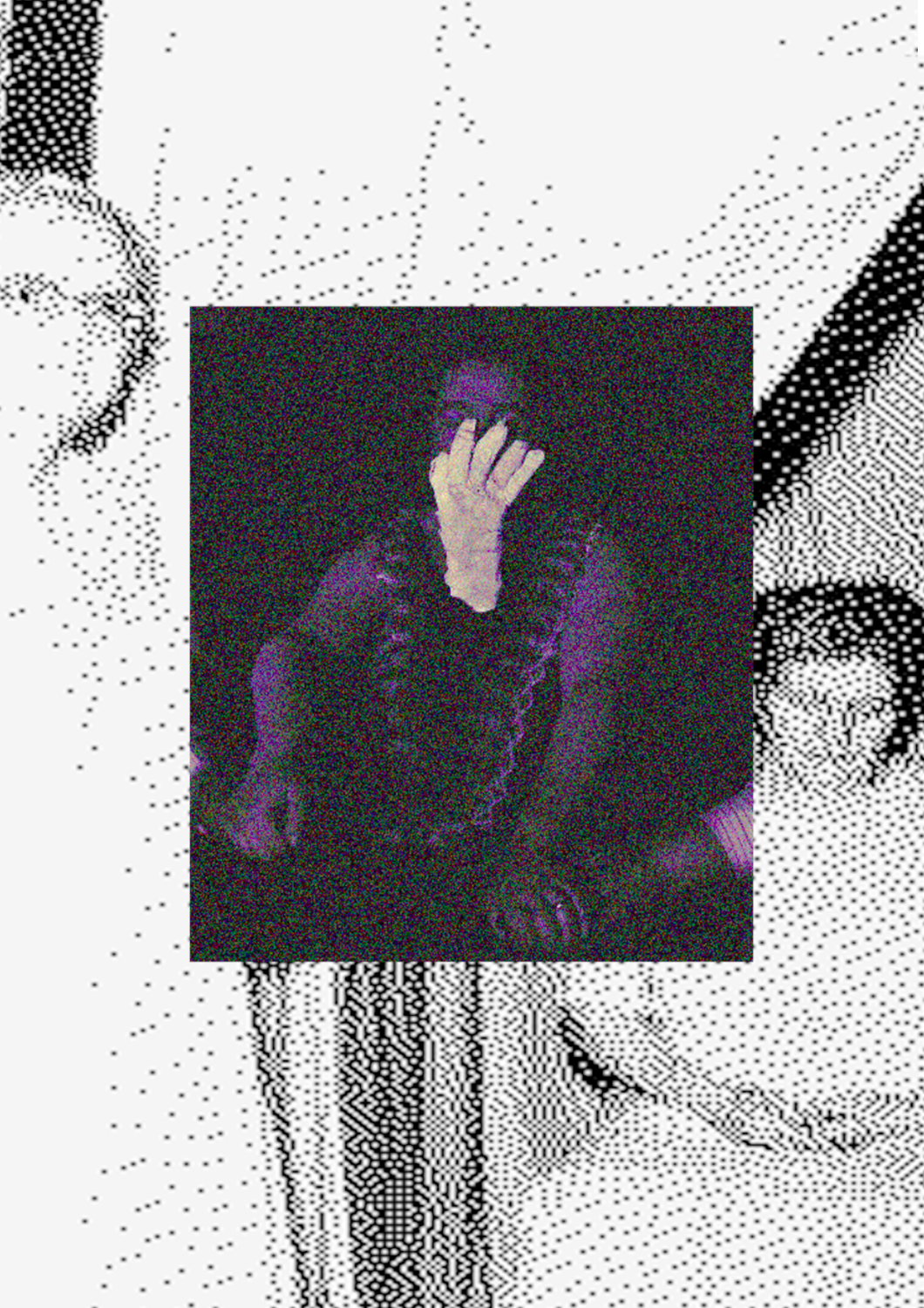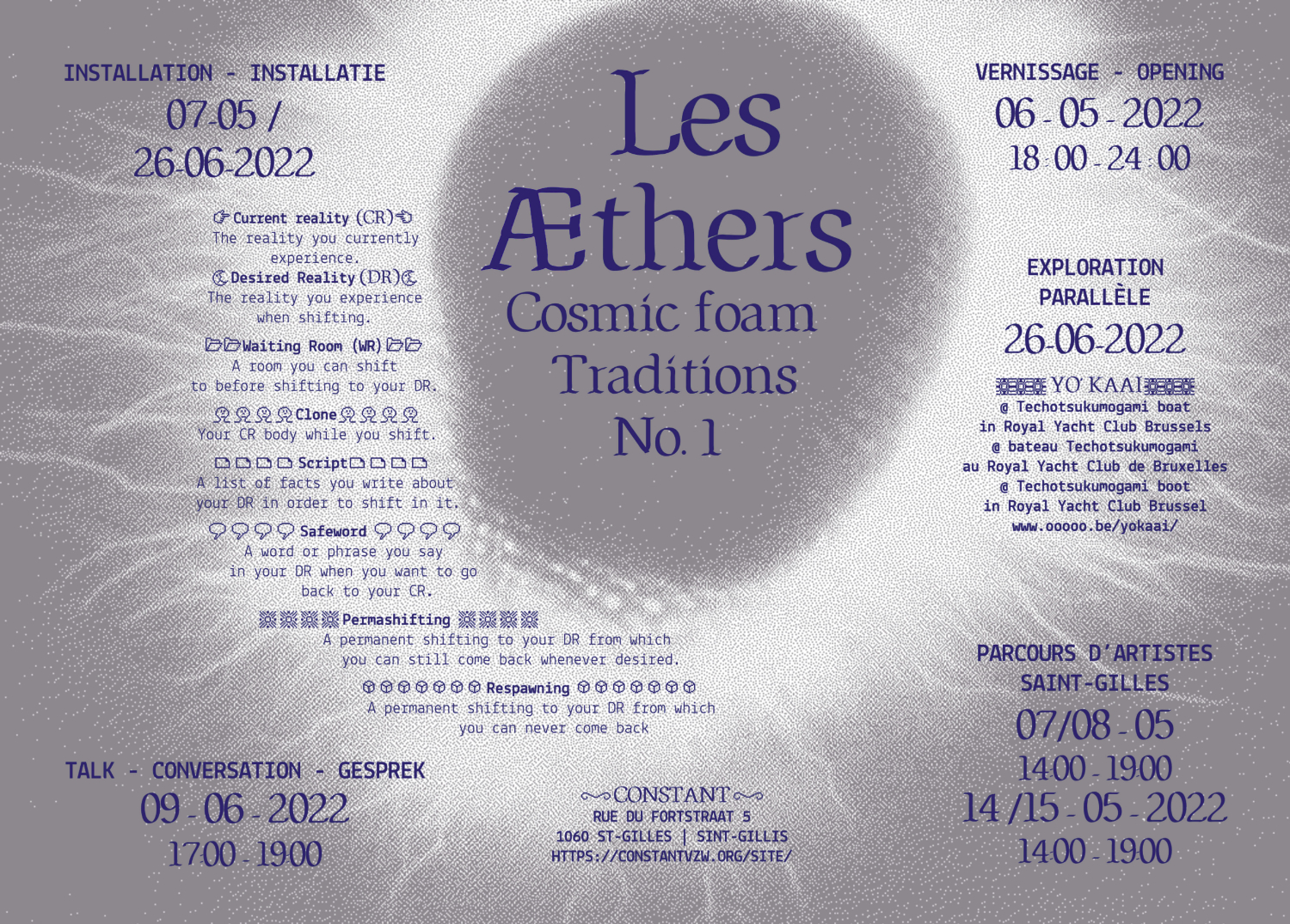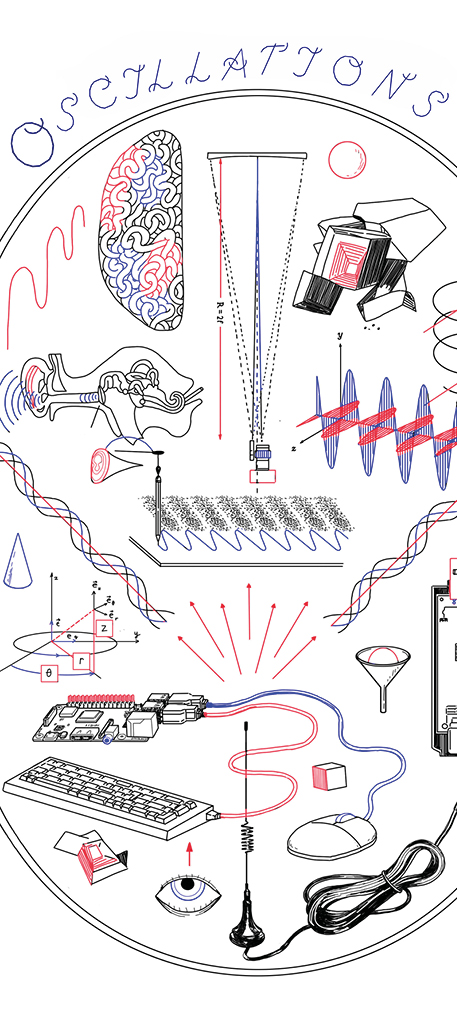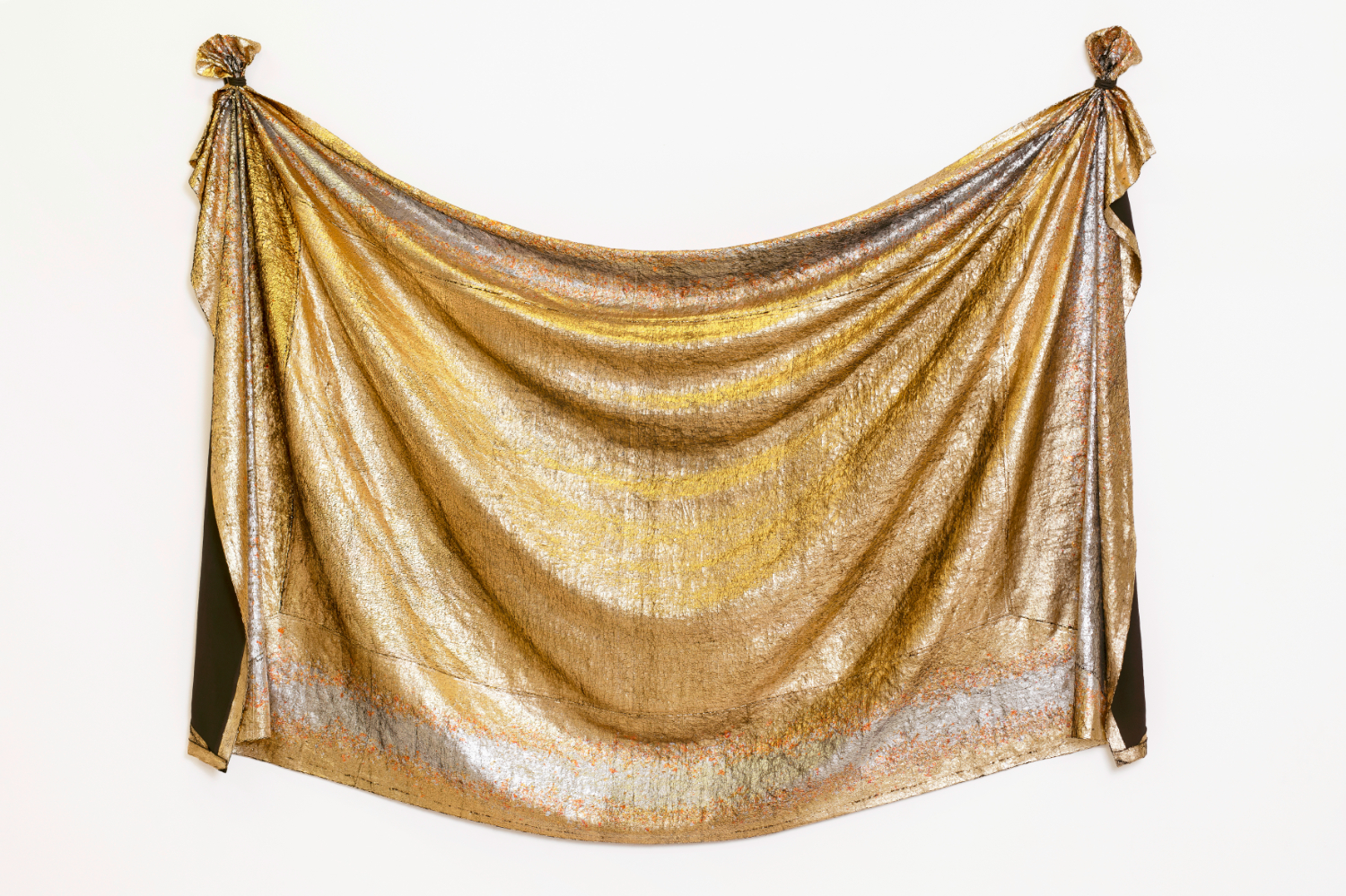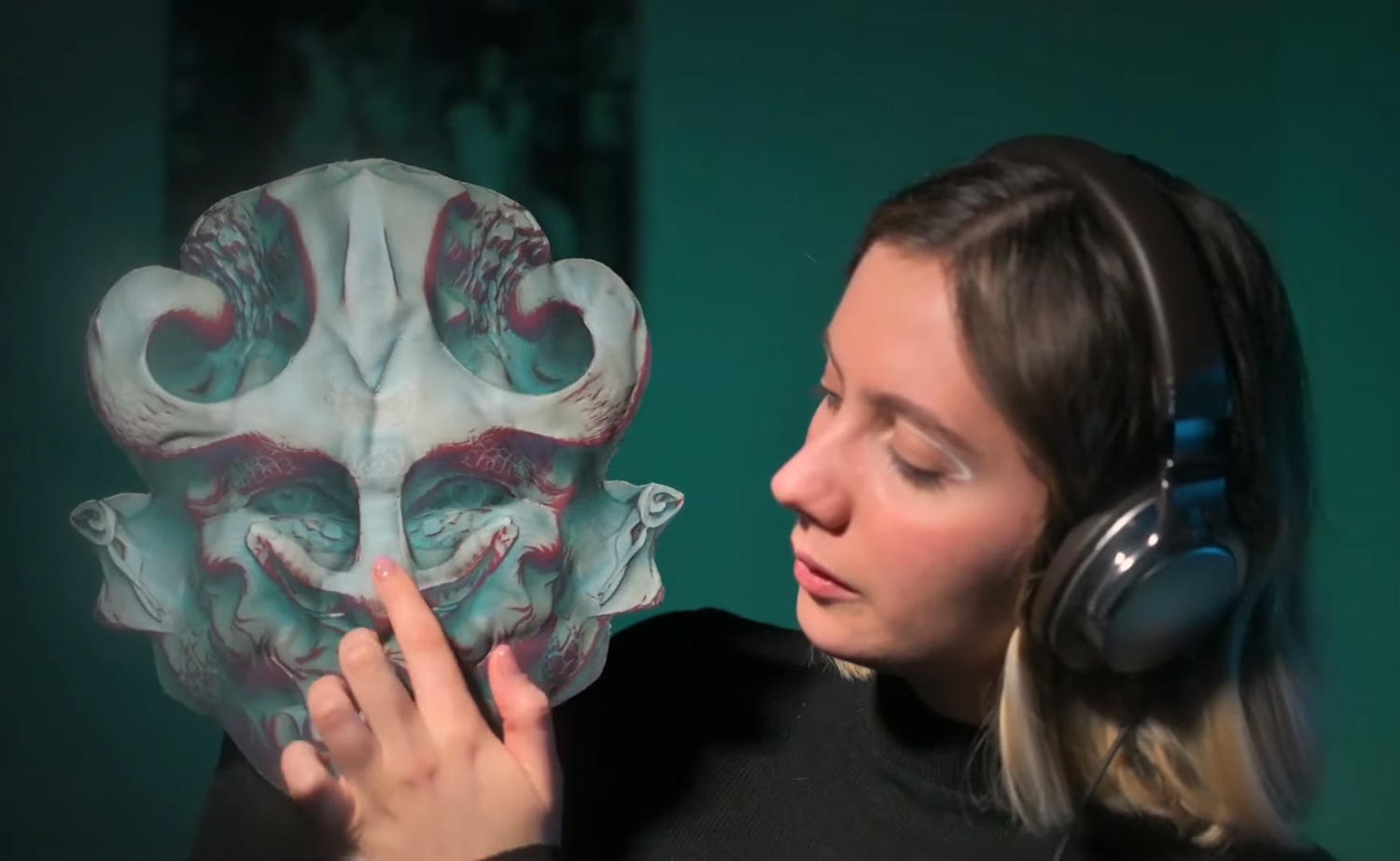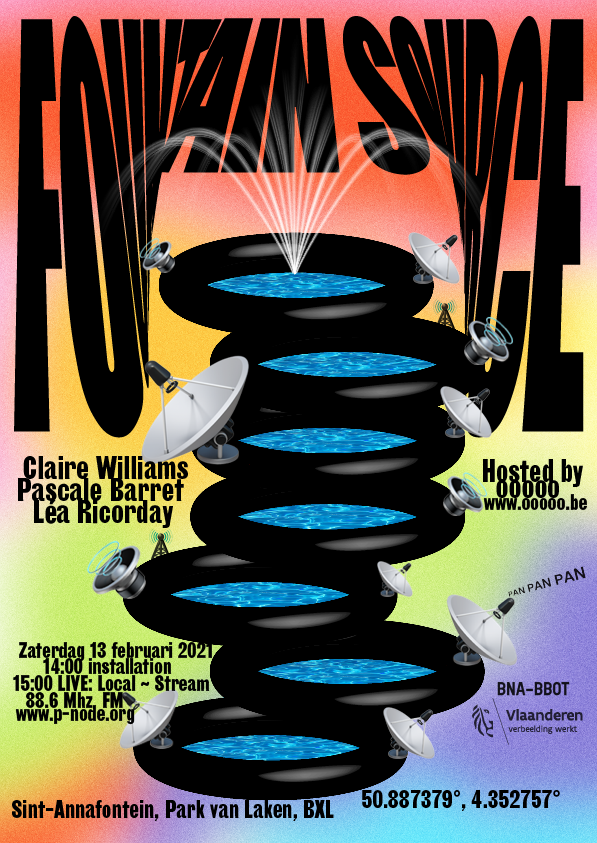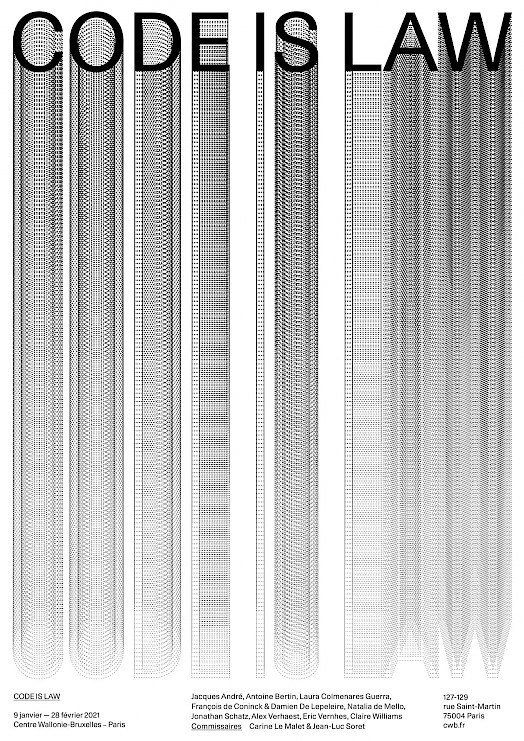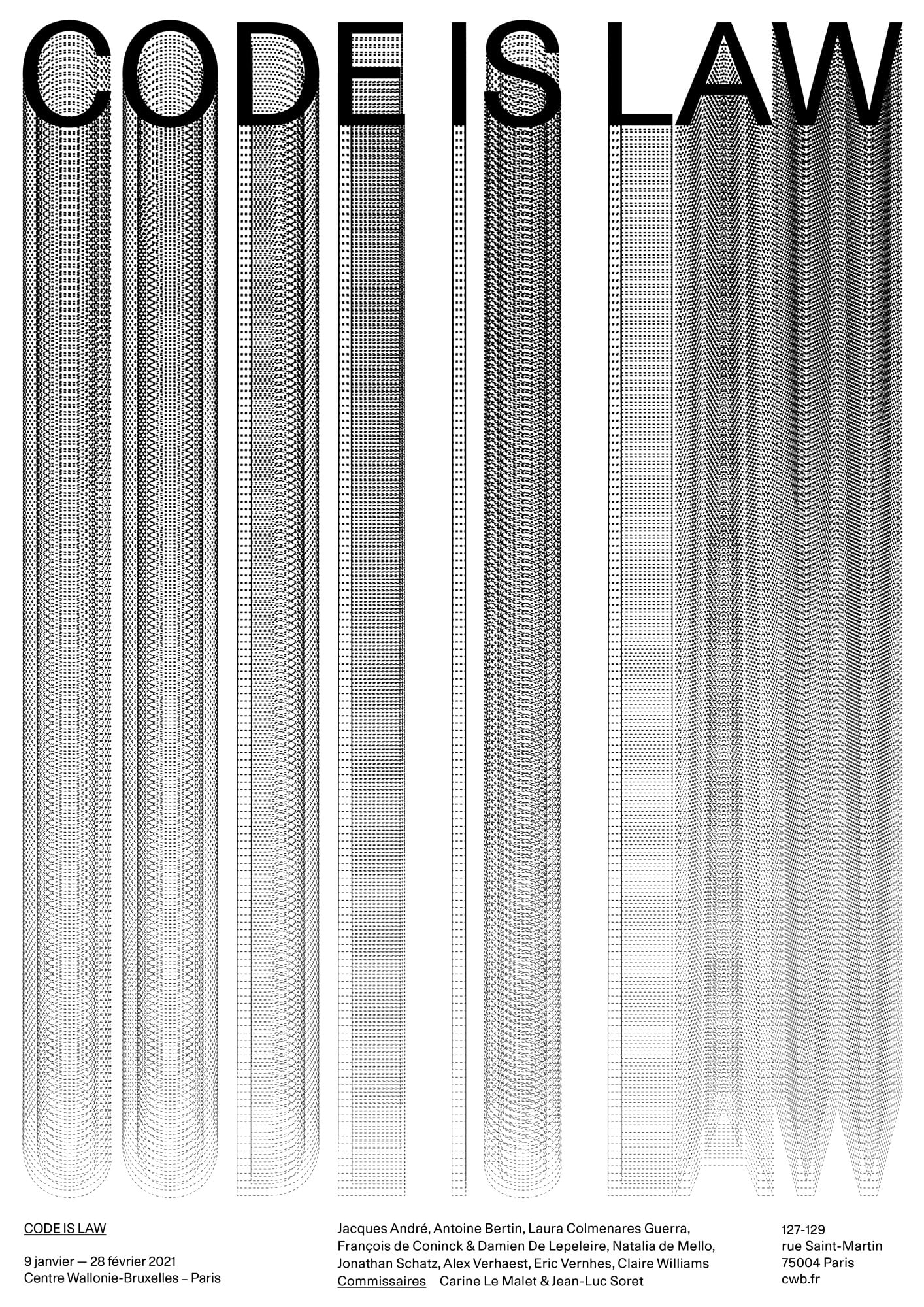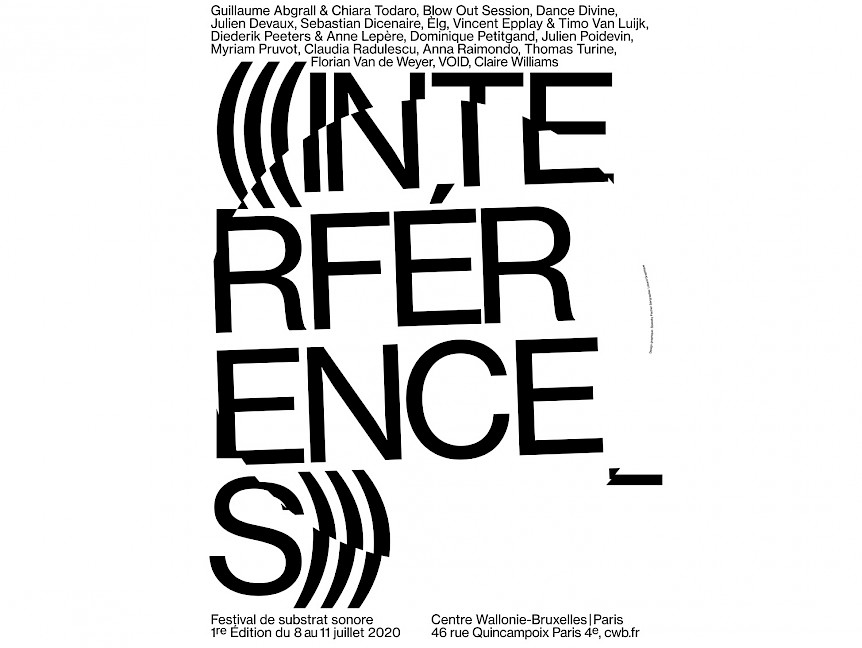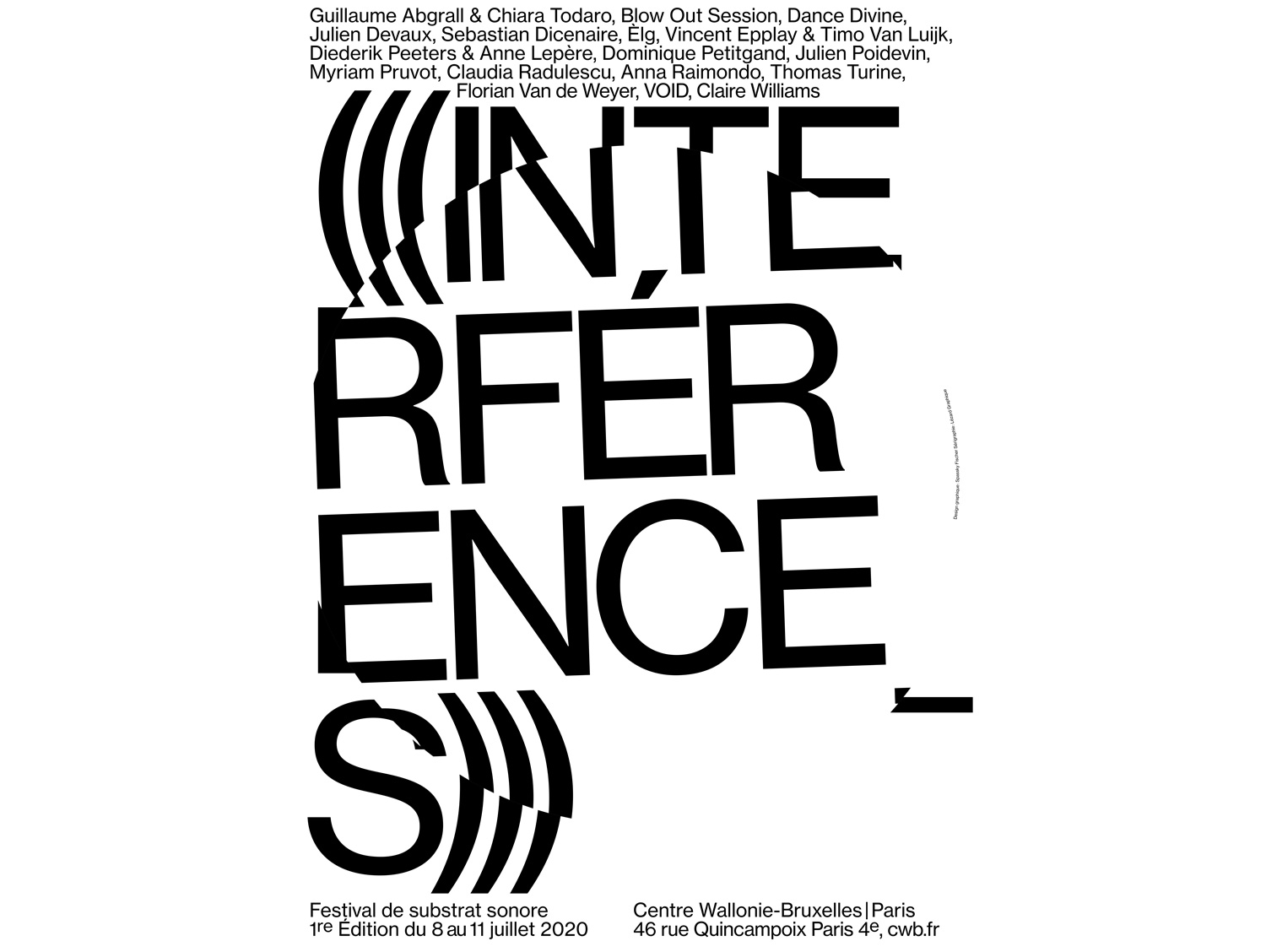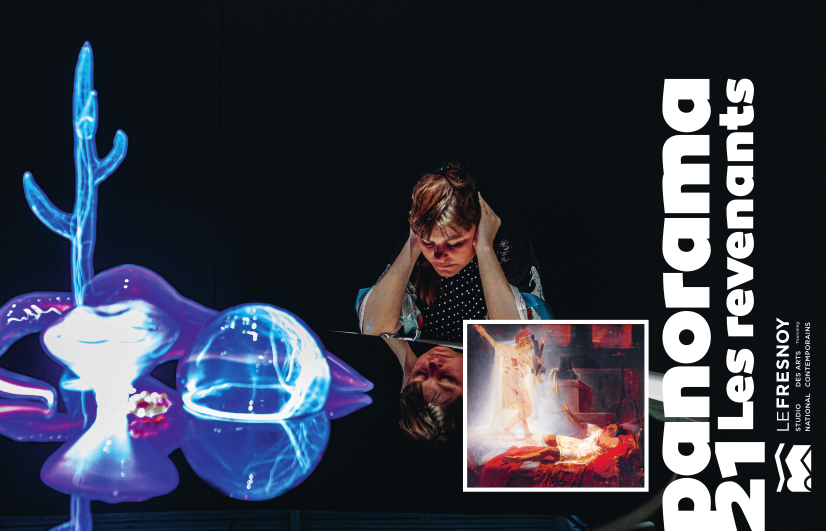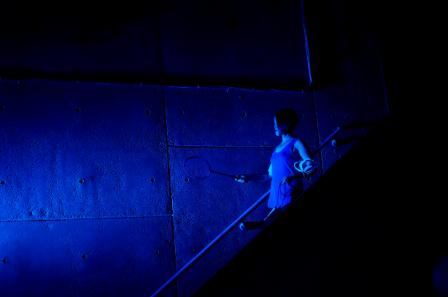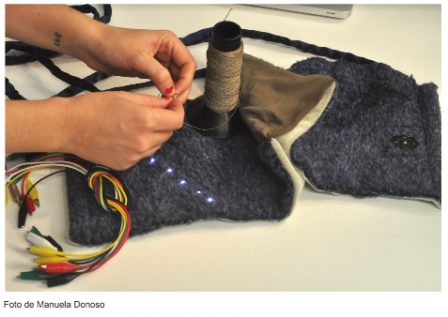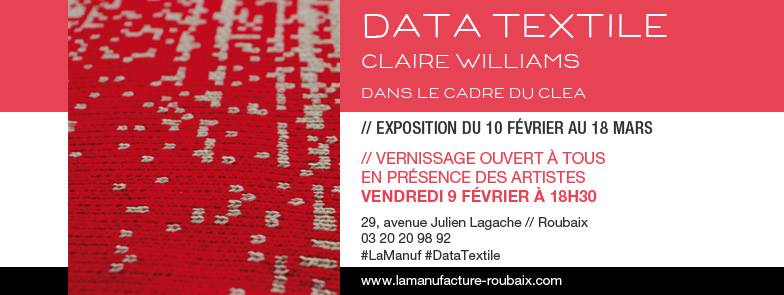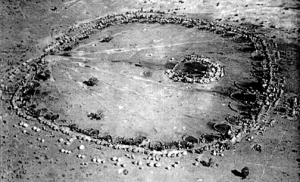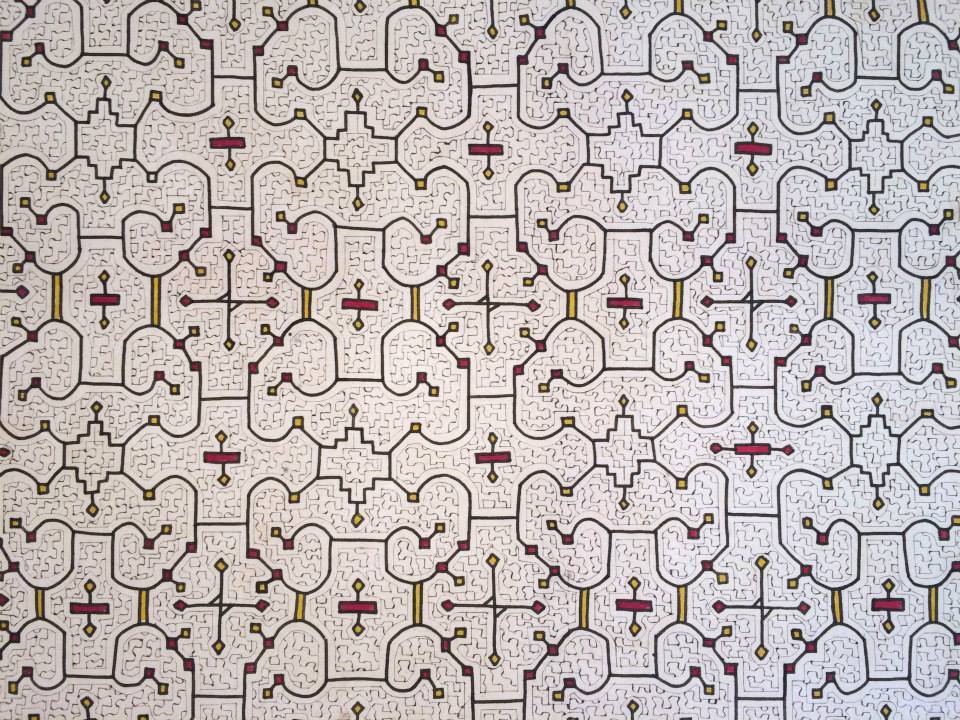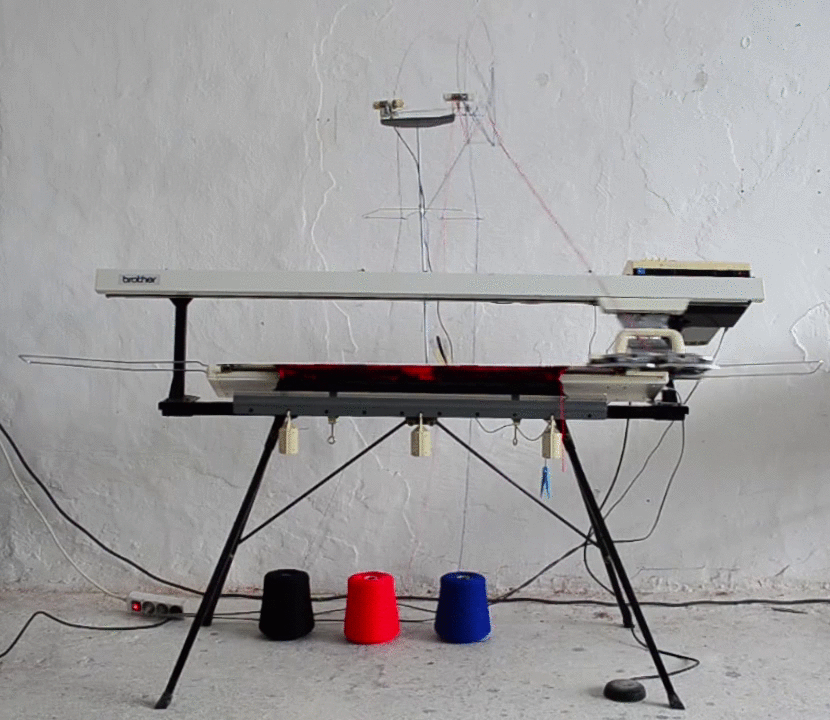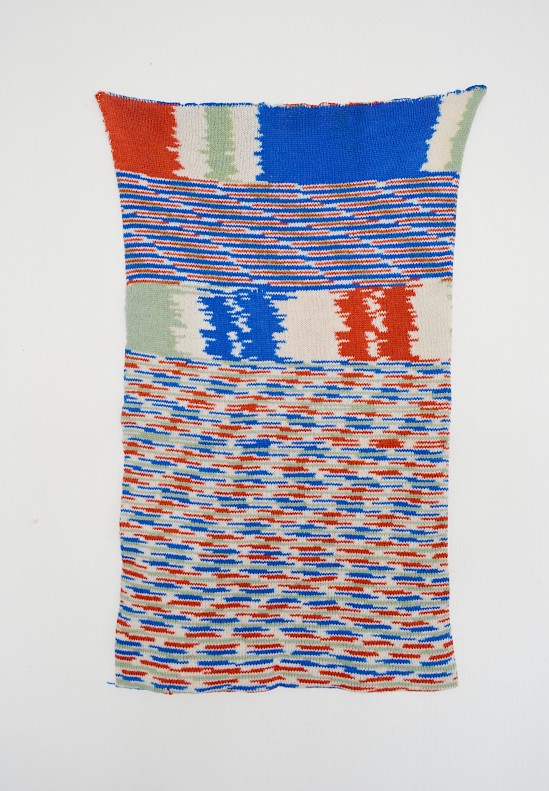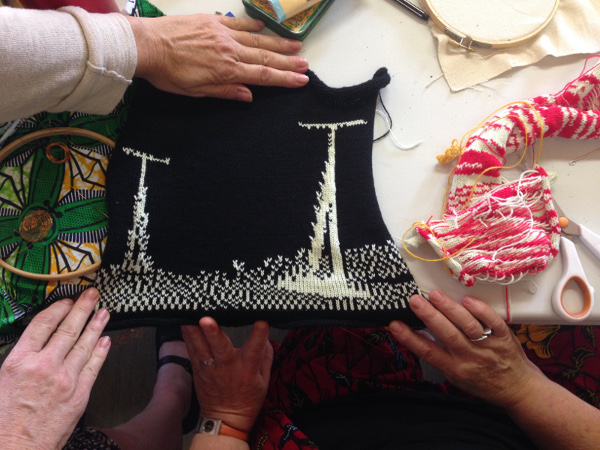Fractals and Indigenous Textiles
28/10/17
The idea of constructing a pattern or textile structure using recursion as a rule is something that can be seen in traditional textiles throughout the world. Theorized by Benoît Mandelbrot in 1974, fractals are a geometric object infinitely fragmented where the details can be observed at any random scale. They are created by repeating a simple process over and over in an ongoing feedback loop. Driven by recursion , fractals are images of dynamic systems. Fractals and recursion can be observed in nature as in trees, rivers, coastlines, mountains, clouds, seashells, hurricanes, etc. Fractals are widely used in biology, economy and computer science using iterative algorithms executed by computers.
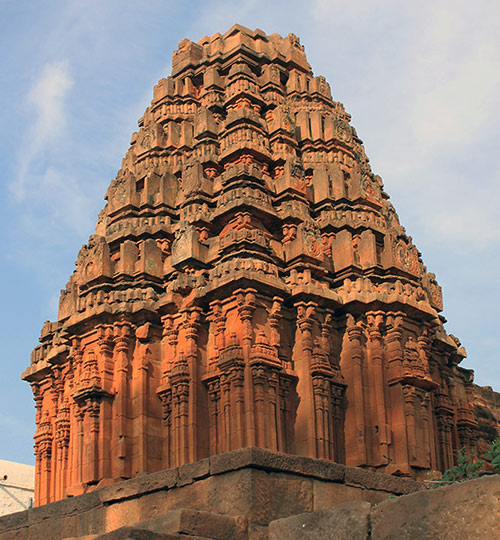
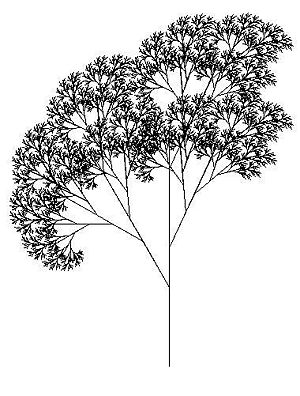
African Textiles
We can find fractals in African crafts and architecture. They reflect a spiritual relationship between the living and the ancestors in some of the African culture. In opposite to an euclidean way of constructing a structure or pattern, African fractals appear to have indeed a mythical meaning through iterative construction. In weaving, pleating or folding and stitch dying resist for example, this could also be related to the textile technique being used which naturally influences the way you construct a pattern inside a textile grid specific to the chosen technique.
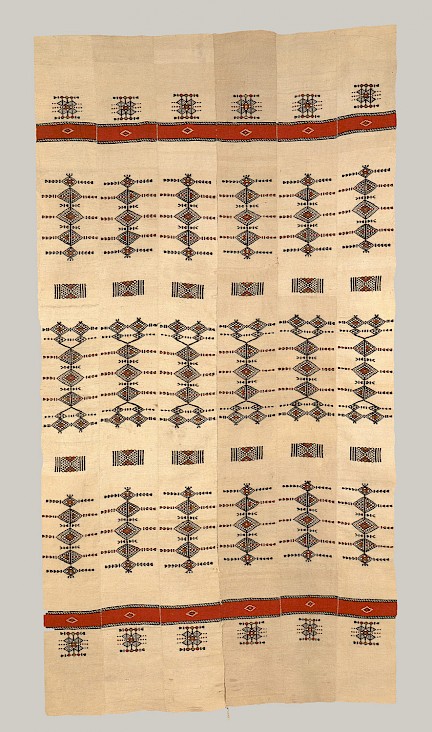
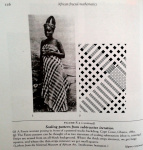
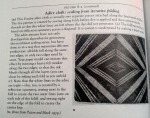

“The traditional Fulani wedding blanket is woven primarily from camel hair. The weavers who created it say that spiritual energy is woven into the pattern and that each successive iteration shows an increase in this energy. Releasing this energy is spiritually dangerous; the weavers say that if they were to stop in the middle (where the pattern is most dense, and hence the spiritual energy is greatest) they would risk death. The engaged couple must bring the weaver food and kola nuts to keep him awake until it is finished.” Ron Eglash

Sources:
Book: African Fractals modern computing and indigenous design – Ron Eglash
African Fractals webiste:http://homepages.rpi.edu/~eglash/eglash.dir/afractal/afractal.htm
Recursion: https://en.wikipedia.org/wiki/Recursion_(computer_science)
Fractal Hindu Temple: http://www.dataisnature.com/?p=2138Fa
The Fractal embroidery of the Lu Mien tribe
Similarities can be observed between the embroidery patterns of the Mien tribe and the Sierpinski Carpet which is a plane fractal first described by Wacław Sierpiński in 1916. These traditional embroidery’s called Ga’nyorh – Spider, and are used to ornament the clothing of the Lu Mien tribe. Also known as the Yao tribe, they are part of the hill tribes of South East Asia.
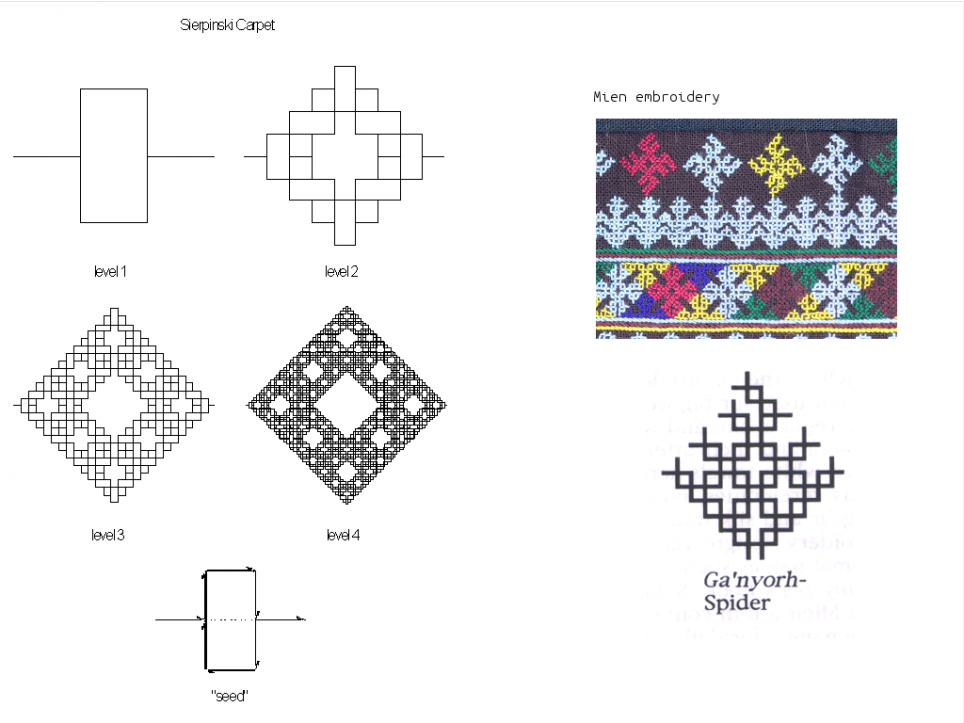
Other Mien embroidery designs:
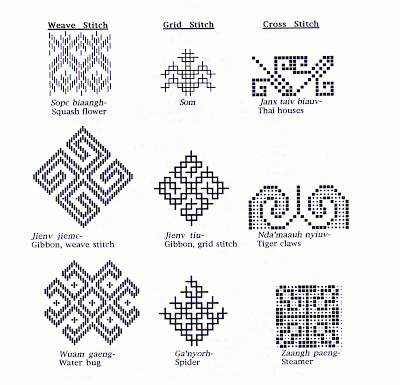
Sources:
http://www.oac.cdlib.org/view?docId=hb458005gp&brand=calisphere&doc.view=entire_text
https://en.wikipedia.org/wiki/Sierpinski_carpet
Kutch Embroidery
A compairasion with the Koch recursion and the traditional Kutch embroidery (India)
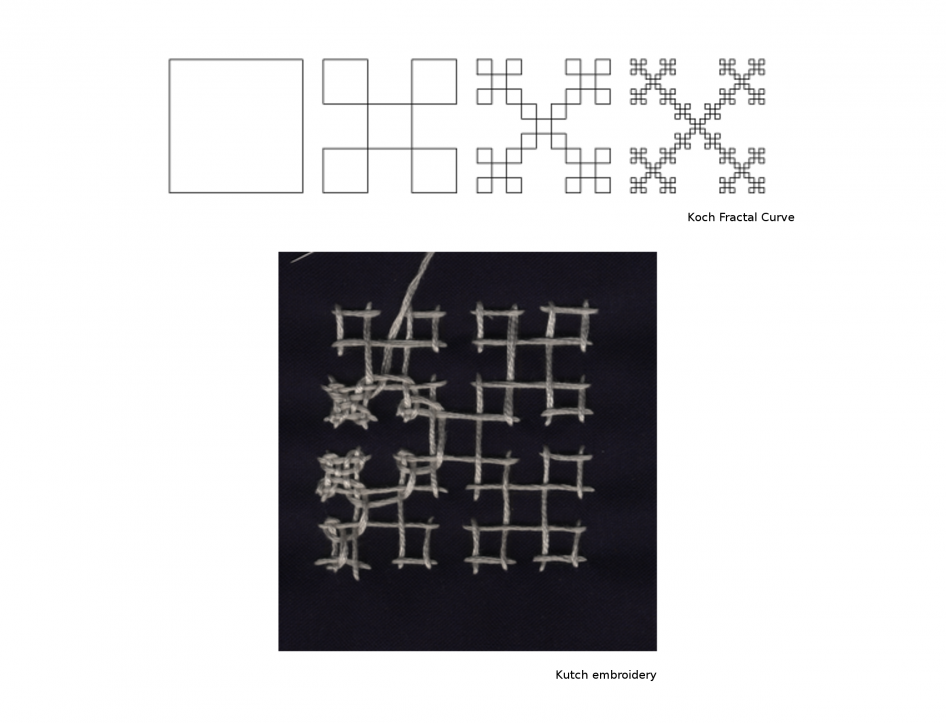
Sources:
http://www.k2g2.org/howto:fractal_kutch_embroidery
https://en.wikipedia.org/wiki/Koch_snowflake
The recursive Shipibo Conobo patterns
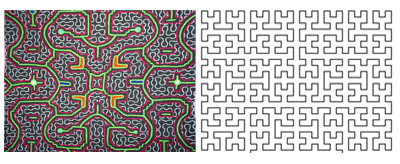
The Shipibo tribe live in the Amazonian forest of Peru. They are known for their intricate embroidery that take part of shamanic rituals. We can observe that their embroidered and painted patterns are constructed with recursive space filling curve rules. These recursive patterns are created by the Shipibo women who simultaneously sing an Icaro chant. “the Shipibo can listen to a song or chant by looking at the designs – and inversely, paint a pattern by listening to a song or music”.
The visual music score embedded in the Shipibo textiles are very intriguing in the way that we could imagine that the patterns correspond to specific musical rules of the Shipibo culture. Other than that, the recursive pattern construction can be imagined as a way to trace a map to circulate on the textile surface in the same specific way you would construct the needle work. On an other interesting article found on dataisnature.com « The Generative Song & Sound Pattern Matrixes of the Shipibo Indians » who makes an interesting parallel between the Shipibo patterns and feed back systems «resemblance of the patterns generated by video feedback especially those systems containing symmetry breaking transformations.»
Sources:
Howard G. Charing – Communion With The Infinite – The Visual Music of the Shipibo tribe of the Amazon
« The Generative Song & Sound Pattern Matrixes of the Shipibo Indians » Data is Nature
L systems: http://en.wikipedia.org/wiki/L-system
Recusion: http://en.wikipedia.org/wiki/Recursion
fr en




